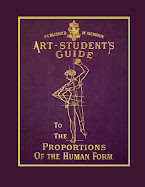

These engravings showing how to draw a hand are also from The Art of Figure Drawing by Thomas H. Maguire. Notice the radius line in the top line drawing indicating the alignment of the knuckles with the joint of the thumb.
This book follows the same convention that A Treatise on Muscular Action does in presenting an outline engraving plus a fully rendered engraving. (See more illustratings from A Treatise on Muscular Action here).
The ability to produce such beautifully engraved books must have influenced the artist and publisher to show what they were capable of.
Draw Real Hands! (Discover Drawing Series)
Drawing Hands and Feet: Form, Proportions, Gestures and Actions (The Art of Drawing)
Drawing & Painting Hands & Feet
Arthur "Pop" Momand - How to draw Hands and Feet
Anatomy for Artists Painters and Sculptors ebook at Figure- Drawings.com
Other posts about drawing hands:
Pencil Drawing for Fun
1762 Drawing Book - The artist's vade-mecum
Willy Pogany's Drawing Lessons
How to Draw Hands - Anatomical Drawings from French Museums
How to Draw Hands - Hendrick Goltzius
How to Draw Hands
Bones of the hand and foot from The Animal Kingdom, Arranged According to its Organization and an Introduction to Comparative Anatomy
Reprint at Amazon.com: The animal kingdom, arranged according to its organization, serving as a foundation for the natural history of animals : and an introduction to comparative anatomy (Volume 3 (Plates))
Bones of the hand, Osteologia print.
Also see: How to Draw Hands
The Landon Course of Cartooning - How to Draw Hands
Pencil Drawing for Fun
Willy Pogany's Drawing Lessons
How to Draw Hands - Anatomical Drawings fro French Museums














































